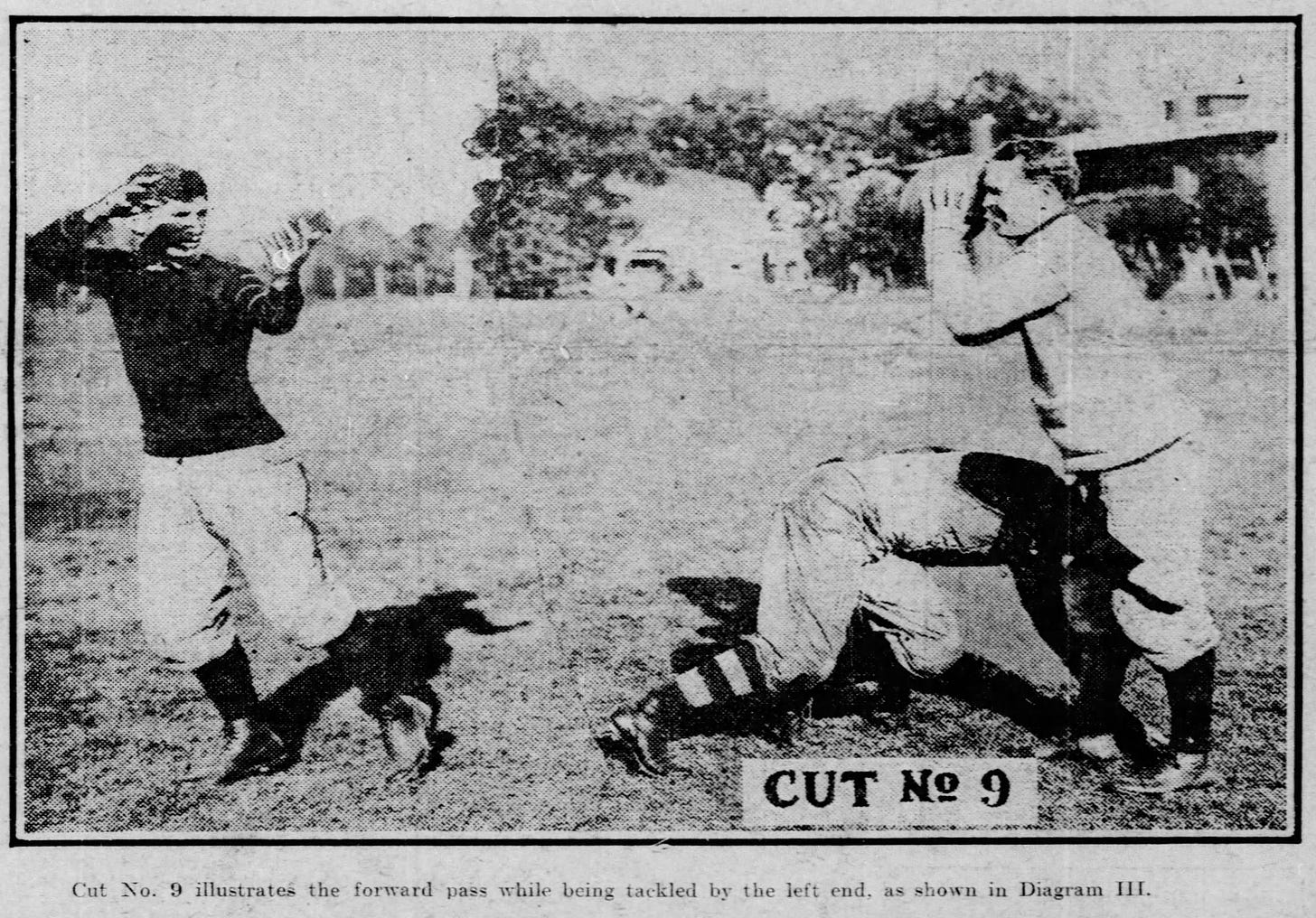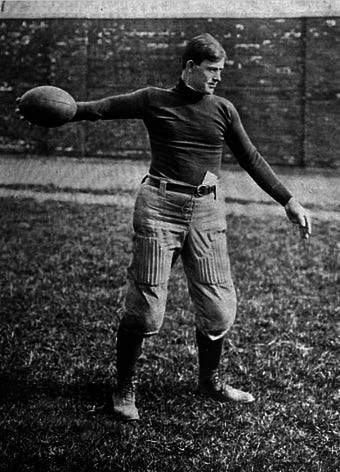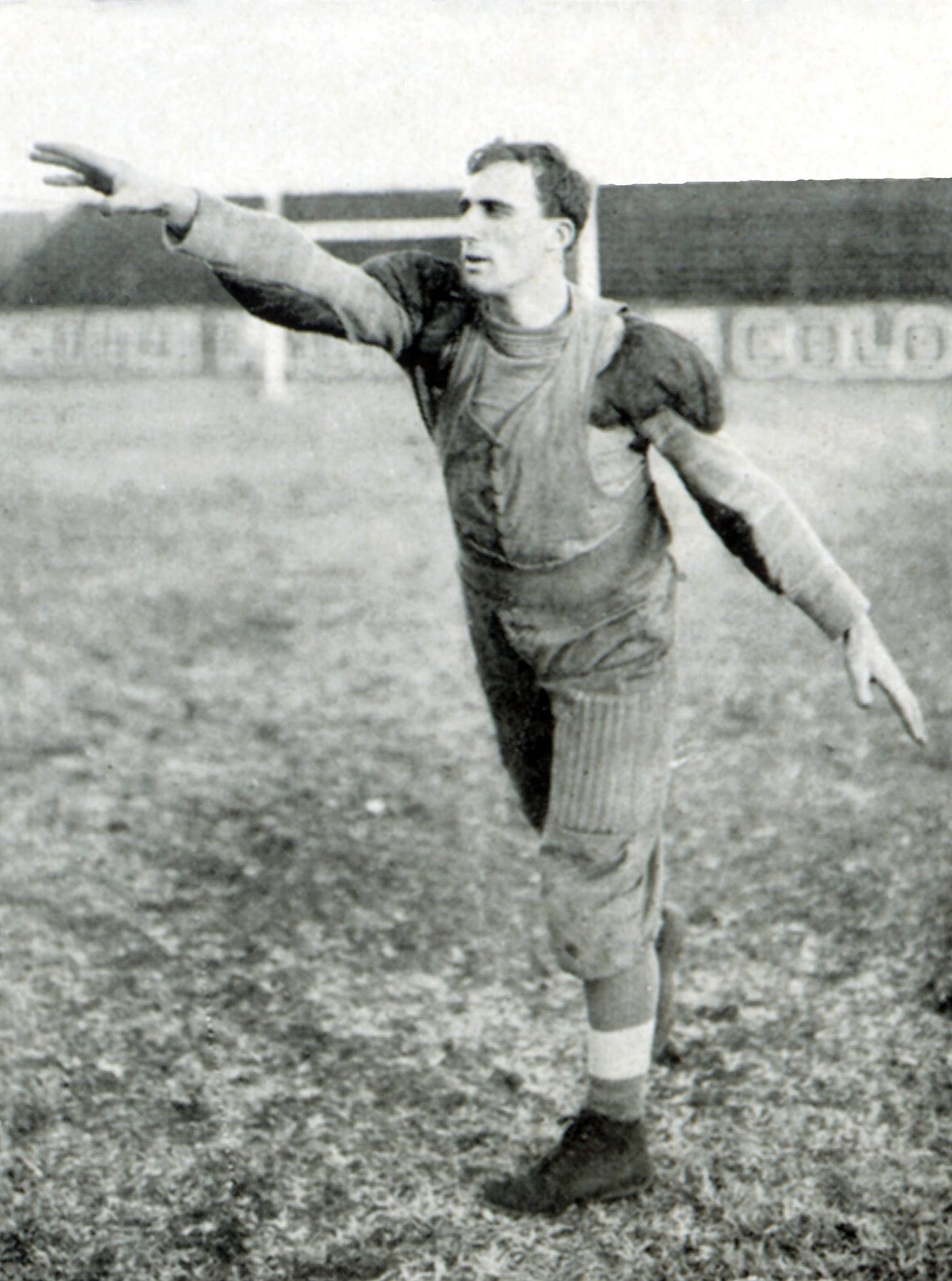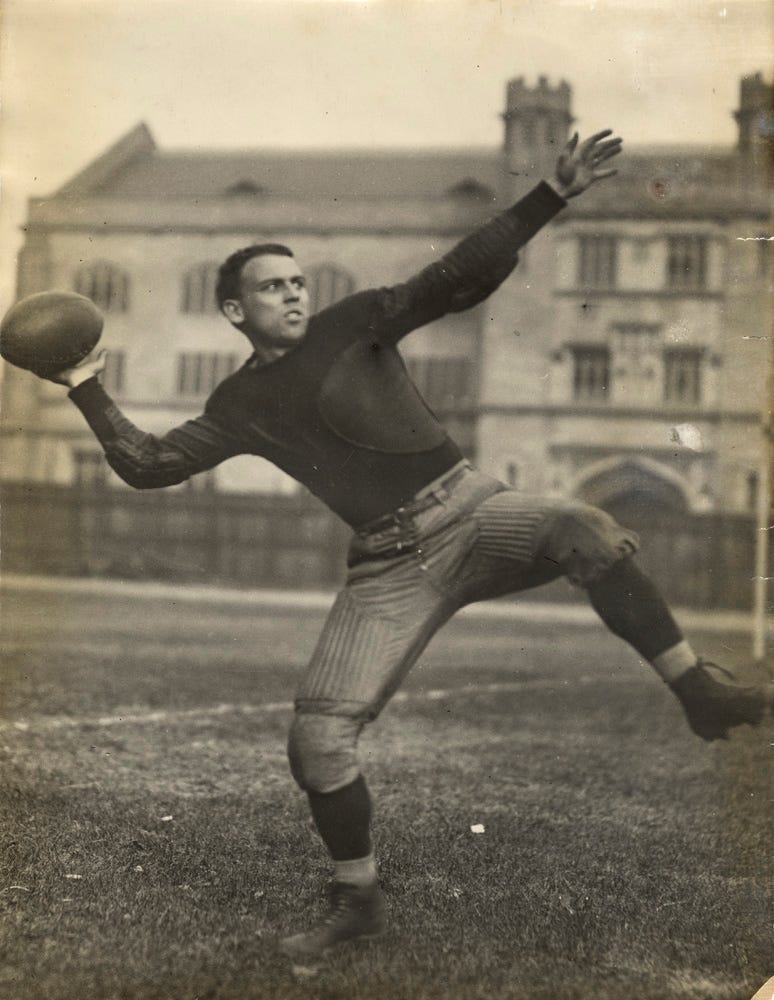Today's Tidbit... Early Forward Passing Techniques
One of the difficulties in researching football's past is the challenge of putting yourself into the minds of people from earlier times. People in 1906 had no idea, for example, that mobile phones would become everyday items. Conversely, a higher percentage of people back then knew how to care for and handle a team of horses.
I've harped on this idea about coaches figuring out how to throw a forward pass when it became legal in 1906. Although the overhand spiral proved the most effective approach, few understood that initially, as shown in a few images below.
George Brooks was a famous syndicated sportswriter who often predicted how each year's rule changes would impact the game. Brooks' predictions often did not materialize, but he was willing to put pen to paper and lay out his thinking, which now provides a window into how one man thought the forward pass would work out.
Brooks was one of many who foresaw the forward pass as involving short-range pitches, not downfield passes, and the result was his prediction that forward passes would occur using a technique similar to a basketball set shot.

Others expected passes to travel farther downfield, but they saw the best technique they devised was to hold the ball in the hands and along the forearm before flinging it downfield like a grenade. Fielding Yost, whose teams scored a point a minute (or nearly so) in those days and was among the nation’s top coaches, could do no better than to fling it.
Of course, Bradbury Robinson of St Louis U gets credit for popularizing the overhand spiral, a technique he learned while practicing with Wisconsin to return punted balls to the punter more efficiently.
There are few pictures of Robinson throwing the ball in 1906. Since the image of Robinson above shows his form approximating the one used today, it is easy to think that his form was similar to today's and that others quickly adopted the same approach. However, I came across another picture in recent weeks that makes me question that assumption. As you can see, the player appears to be throwing a downfield pass, but his thumb does not touch the ball, and he lifts his left leg high as if he were throwing a fastball. No one raises their plant leg that high nowadays, but the pictured player certainly did.
Of course, if the picture player were a nobody, I would chalk it off as an oddity or poor coaching. However, the pictured player is Walter Steffen, Chicago's quarterback in 1907 and 1908 and a 1908 first-team All-American at quarterback. Since he was an All-American coached by Amos Alonzo Stagg, the image reinforces the idea that passing techniques took a few years to settle into a form similar to today's.
Football Archaeology is reader-supported. Click here to buy one of my books or otherwise support the site.





Great job of describing the techniques in written word and then finding the visual image too!